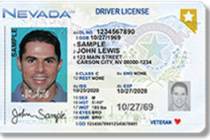Legislators propose changes to medical malpractice restrictions
The hepatitis C crisis that continues to unfold in Southern Nevada played a critical role in the introduction Monday of an Assembly bill that would remove the key element of the 2004 medical malpractice reform initiative: a $350,000 cap on pain and suffering damages.
The bill also would give possible victims of malpractice a year longer to file claims while also allowing attorneys five years, rather than two, to bring a case to trial.
Assemblywoman Sheila Leslie, D-Reno, who is majority whip of the lower house, said Monday that the hepatitis C cases arising out of clinics in Las Vegas serve as a reminder that there must be "more effective recourse for lives that have been ... negatively affected by a doctor."
"I think the hepatitis C tragedy was a catalyst for malpractice reform because an adequate remedy is needed by patients hurt by a doctor such as Dr. (Dipak) Desai," Leslie said.
Desai, the majority owner of the Endoscopy Center of Southern Nevada, was accused in 2008 of ordering his nurses to reuse syringes and single-use medicine vials to save money. The dangerous injection practices led to nine people being infected with hepatitis C and about 50,000 being told to get tested for infectious diseases, according to the Southern Nevada Health District.
More than 100 others may have contracted hepatitis at the clinics, health officials say.
State Sen. Barbara Cegavske, R-Las Vegas, said overturning the 2004 initiative, known as Keep Our Doctors in Nevada, "is a huge mistake. You don't undo something good because of something one doctor has done."
"We will lose more doctors in Nevada," she said. "Doctors' offices will close due to the increase in medical malpractice insurance rates. Specialists will not come and may leave."
Doctors and insurance executives, who largely funded the 2004 initiative, argued that large payouts in Nevada -- often for pain and suffering -- made medical malpractice rates escalate dramatically. That, they argued, was making doctors leave the state in droves.
Though that argument was found to be specious by the nation's General Accounting Office, it was used successfully to persuade Nevadans fearful of losing their family doctors to vote overwhelming for what was known as Question 3.
Before 2004, juries would sometimes award seven-figure judgements for pain and suffering to grieving parents who lost a child to medical negligence or to an individual whose quality of life had changed because of a physician's mistake.
Recovery of economic damages, including loss of future earnings and medical expenses, still remained in effect, but, to attorneys, that left many potential plaintiffs by the wayside. Children, homemakers, senior citizens, and people who are still able to work despite an injury have no loss of future earnings to calculate. Essentially, these malpractice awards would come out of the $350,000 now allocated to pain and suffering, a sum divvied up between the attorney and the client.
Gerald Gillock, a veteran plaintiff's attorney, said the cost of hiring experts and the long hours working a case often does not make it worthwhile to take a case when only $350,000 is at stake.
"If you're paying over $100,000 for experts to prove a case and it takes months or years, it's not worth it for anybody," he said. "People who have been harmed aren't getting the justice they deserve."
Since the passage of 2004 reforms, medical malpractice rates have dropped 30 percent in Nevada. Major insurance carriers writing premiums jumped from six to eight and minor carriers now number more than 80.
According to studies done by Medicare and Medical Economics, doctors nationwide spend between 3.2 percent and 3.9 percent of their practice incomes on malpractice insurance.
Sheldon Davidow, chief executive officer of Medicus Insurance Co., said his Texas-based firm decided to enter the Nevada market because of the stability afforded by the reforms that suggested there would be fewer large payouts. He said Monday he got approval three weeks ago to lower rates another 7.5 percent.
"We wouldn't even be talking about new legislation if it wasn't for Desai," said Dr. J. Kenneth Volker, a Las Vegas obstetrician/gynecologist who is also chairman of Premier Physicians Insurance Company, which writes malpractice insurance for physicians. "Malpractice rates are now down and competition is up."
However, Gillock and consumer groups, including the Ralph Nader-founded Public Citizen, say malpractice insurance rates often rise and fall in relation to other business ventures and investments of insurance carriers rather than malpractice payouts.
Dr. Weldon "Don" Havins, former president of the Clark County Medical Association, said that undoing the tort reform of 2004 could mean new doctors won't come to Nevada. He noted that the net gain in licenses issued to doctors who chose to practice in Clark County dropped to a low of seven in 2002.
Just the promise of medical tort reform passage in 2004, Havins said, brought a net gain in licenses that year to 212. The gains have continued and stabilized, he said.
"It would be a mistake to go back to where we were before," he said.
Richard Krikalo, who blames a botched retina reattachment procedure in 2007 for blindness in his right eye, disagrees. Lawyers, he said, told him time limitations were an issue. Under the present law, he had only a year to file a claim. Under the proposed law, plaintiffs would have two years.
"By the time I was sure that it couldn't get fixed, my year was already almost up," he said.
Because he can still work, Krikalo said, lawyers told him there would be no economic damages. "They said it would cost them so much in experts to prove what my doctor had done that the $350,000 just wasn't enough," he said.
"I could never even get my day in court after I lost an eye," Krikalo said. "That isn't right. I hurt."
Contact reporter Paul Harasim at pharasim@reviewjournal.com or 702-387-2908.

















